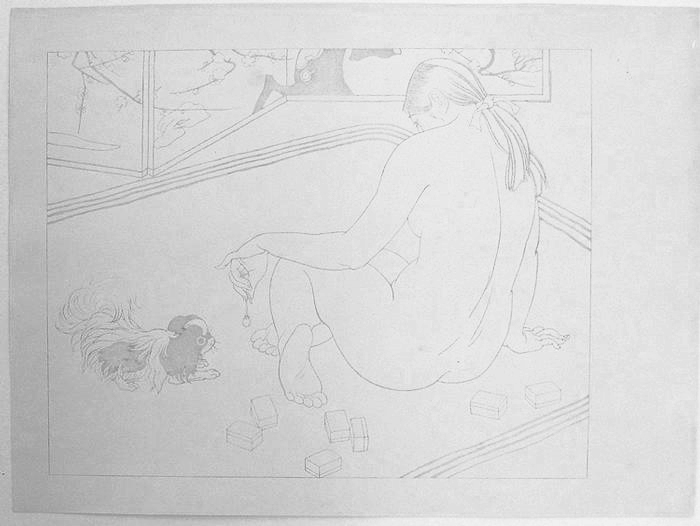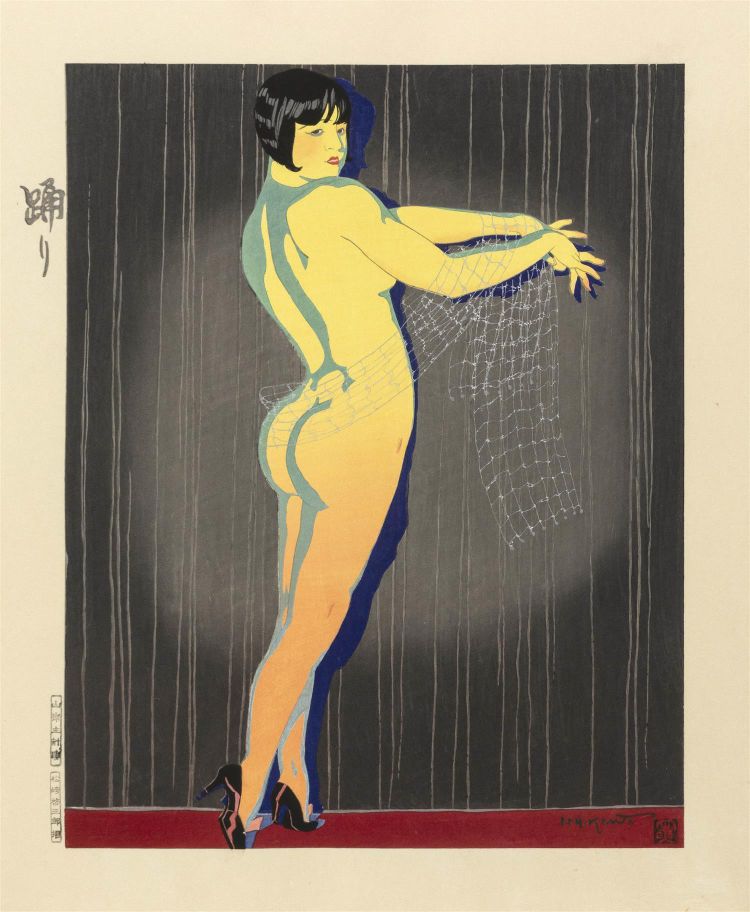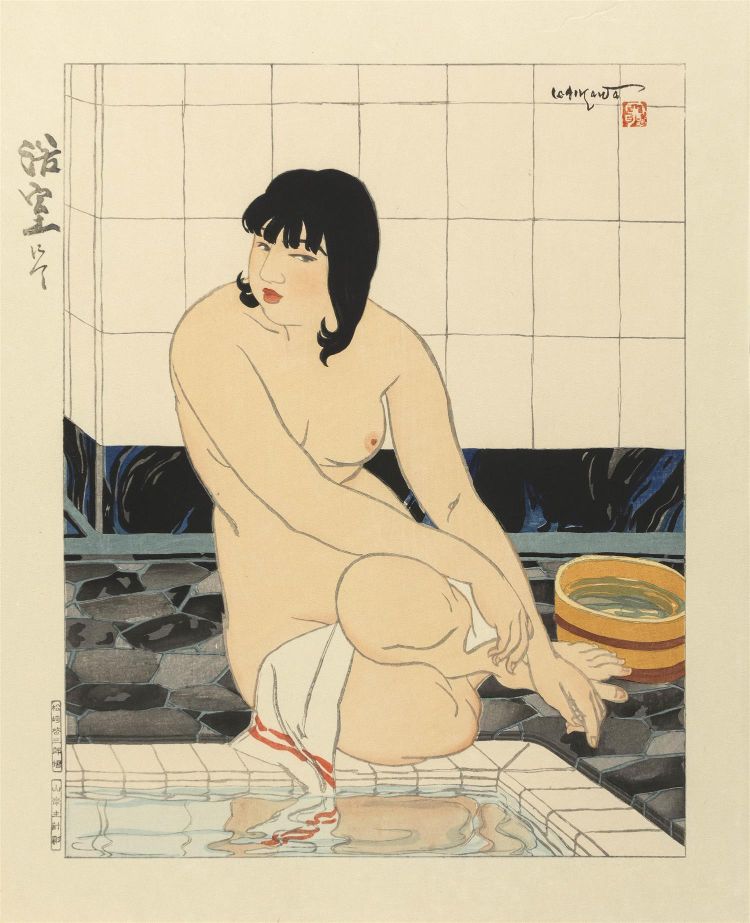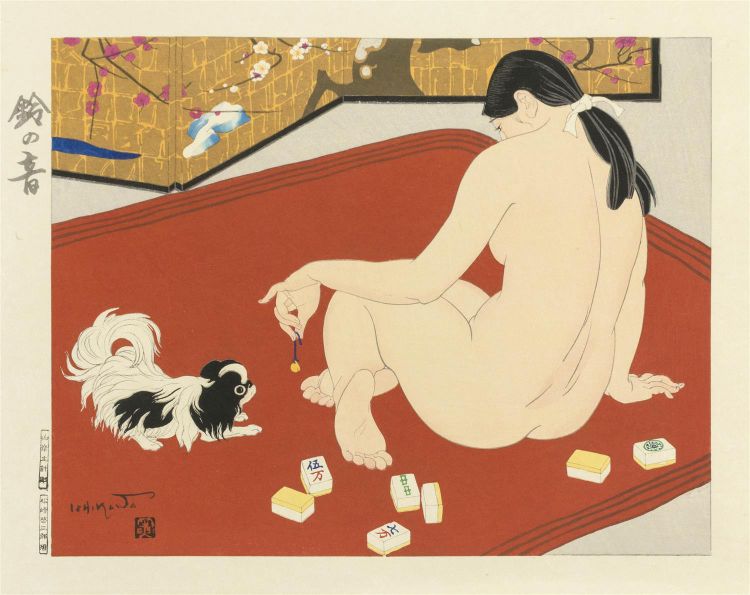Ishikawa Toraji (石川寅治, Japan, 1875-1964) was a Japanese painter and printmaker known for blending Western-style motifs and techniques with traditional Japanese ukiyo-e style. He is also famous for pushing cultural and artistic boundaries with his print series Ten Types of Female Nudes.
Ishikawa Toraji was born on the island of Shikoku in the town of Kochi. At age 17, Toraji studied Western-style painting with artist Koyama Shōtarō (1857-1916) at Koyama’s art school, Fudōsha, in Tokyo. Toraji aided Koyama with illustrations for a book depicting the Sino-Japanese War that occurred in 1894 and 1895. Toraji began his career as a landscape painter. He showed his paintings in the Meijij Bijutsukai (Meiji Fine Arts Society) exhibitions and gained instant critical acclaim. In 1902, he co-founded the Taiheiyo-Gakai (Pacific Western-style Art Society Institute), which included the printmaker Hiroshi Yoshida (1876-1950).
In the early 1900s, Toraji traveled extensively to the United States and Europe. In 1904, he returned to Japan and exhibited his oil paintings in the Bunten, Teiten, and Shin-bunten (New Bunten) shows held by the Japanese government. The same year, Toraji published an article referencing the Czech Art Nouveau painter Alphonse Mucha in the Japanese literary magazine Myōjō. In 1915, the painter exhibited his oil paintings at the Panama-Pacific Exposition in San Francisco and was awarded a bronze medal for his painting titled Grape. Toraji also traveled to China, Korea, and Taiwan for some time. In 1918, Toraji produced 21 designs for the book Shin Nihon kenbutsu (Views of Japan), which included landscape renderings from his trip to Taiwan. In 1938, Toraji was commissioned to create paintings depicting scenes of the Second World War by the Japanese Navy. The series primarily documented Japan’s air victories over American planes. In 1943, he exhibited the paintings at the Daigokai kaiyo bijutsuten (Fifth Naval Art Exhibition), including the work Tōyo bakugeki (Transoceanic Bombing).
Toraji focused heavily on woodblock prints later in his artistic career. In 1917, he created print designs for an advertising portfolio published by the publishing house Kanao Tane-jiro. Additionally, Toraji contributed to the Dai Chikamatsu Zenshu (The Complete Works of Chikamatsu), a collection of 18 prints. Each print was designed by a well-established artist, which depicted a character from each play written by Japanese kabuki theater playwright Chikamatsu Monzaemon (1623-1724) – Japan’s equivalent to William Shakespeare. In the 1930s, Toraji returned to landscape scenes with the print series Inland Sea Landscapes.
In 1934 and 1935, he designed and printed his most famous woodblock series Ten Types of Female Nudes. The artist Yamagishi Kazue assisted with the carving of the woodblocks. Each print is large-format polychrome accented with vibrant colors and impressed with crushed mica. The series depicts one woman in Western-style striptease while the other nine show the female nudes in scenes of seclusion and intimate privacy, similar to ukiyo-e traditions of bijin (beauty). The series was and still is sought after because of Toraji’s ability to illustrate effortlessly natural and languid figures. Additionally, the series underscores the increasing modernization of Japan and it’s culture. The prints reveal hints of 1920s and 1930s Western style and fashion as well as Art Deco motifs. Upon release, the series sparked controversy in Japan. As a result, a few of the designs were confiscated and destroyed by Japanese authority. The prints were a bold stride for Toraji who went from creating landscape paintings and watercolors to a series of nudes that the Eastern world was not yet accustomed to. Toraji’s Ten Types of Female Nudes, though, are some of many shin-hanga prints that were trafficked under the radar of social order. The prints elicited portrayals of ideal and radical women that were emblematic of the changing times.
Despite his controversial series, Toraji was well respected as an artist. He was an involved member of many artistic counsels in Japan. In 1943, he was inaugurated as the head of the Taiheiyo Bijutsu Gakkō (Pacific Art School). Three years later, he joined the Shigen-kai Society, which exhibited Western-style painting. In 1950, Toraji became an adviser to Nitten (The Japan Fine Arts Exhibition). He also taught at the Tokyo Koto Shihan Gakkō (Tokyo Higher Normal School) and the Tokyo University of Education. In 1953, he was awarded the Imperial Award by the Japan Art Academy. Toraji continued creating work till the end of his life, mainly landscape paintings of coastal Japan.
Ishikawa Toraji passed away in 1964 at age 89 in Tokyo, Japan. His prints are indicated by a signature of his full name in Japanese, the name “Ishikawa” written with a seal, or a seal named Tora. Ishakawa Toraji’s work can be found in numerous collections and major museums worldwide including the British Museum, Art Institute of Chicago, National Gallery of Victoria, Fine Arts Museum of San Francisco, Los Angeles County Museum of Art (LACMA), Brooklyn Museum, Honolulu Museum of Art, and Indianapolis Museum of Art, among others.







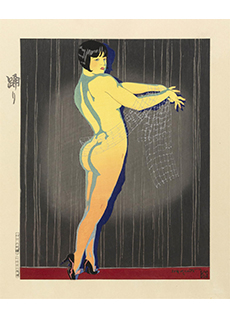
 Japan
Japan

